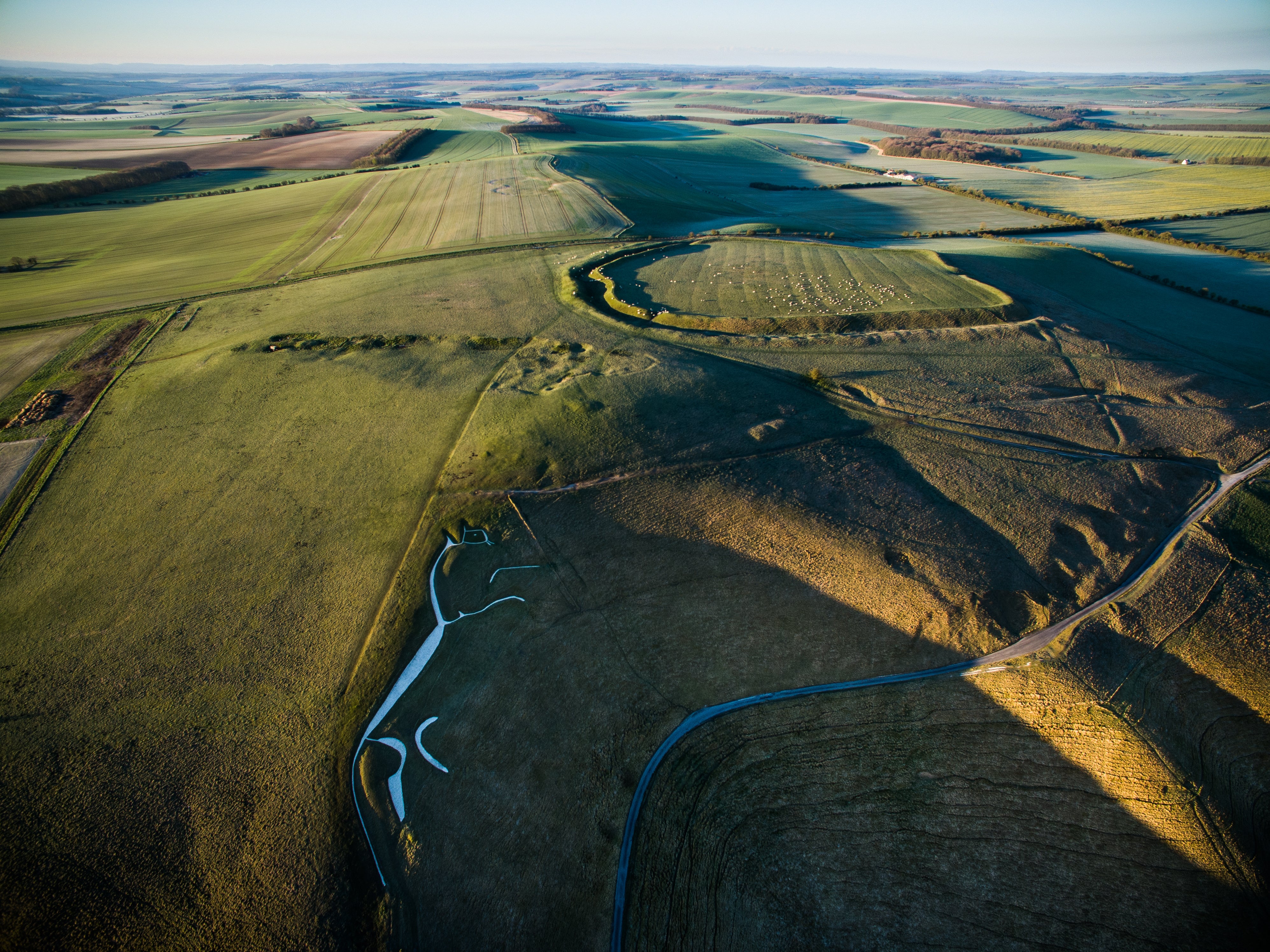A giant’s story: How new archaeological research may help reveal England’s long-lost past
Archaeology correspondent David Keys explains how England’s hillside chalk figures shed fresh light on the political and religious motivations behind their construction

The discovery that one of England’s best-known chalk hill figures - the Cerne Abbas giant – was probably created by the Anglo-Saxons in early medieval times has substantial implications for how historians interpret at least some of southern Britain’s other hillside images.
The hill figure phenomenon is, in the main, an exclusively English tradition. Over the millennia, at least 35 have been carved into English hillsides.
The oldest known example is the White Horse of Uffington – a probable communal or tribal political or religious emblem created around 1000 BC.
Six others are probably of prehistoric, Anglo-Saxon or later medieval origin. Around 17 others were created in the 18th and 19th centuries and at least seven were made in the 20th century. An additional five have been created over the past 20 years.
The figures fall into two main categories – those portraying horses and those portraying giants.
Around 20 horse hill figures survive – and a further dozen have vanished from sight.

Two giants (Cerne Abbas in Dorset and the Long Man of Wilmington in Sussex) survive - and another five used to exist but have now been lost.
Although the horse and giant figures are an iconic and enigmatic aspect of British archaeology and history, they haven’t attracted their fair share of attention from most archaeologists and historians.
The National Trust’s Cerne Abbas Giant dating initiative is one of only a handful of chalk-figure-related modern scientific research projects which scholars have carried out over recent years.
But they and many of the other figures may have a lot to contribute to a greater understanding of England’s story.
The amount of labour and planning required to construct the larger figures (some over 100 metres long) suggest that they were often major communal undertakings.
Some of the older ones may therefore be capable of shedding important new light on the political and religious motivations behind their construction.
Indeed, some may help illuminate the transition from paganism to Christianity in the seventh century A.D. – especially pagan and traditionalist reaction to Christian pressure.
Modern dating techniques (specifically optically stimulated luminescence) provides an opportunity for dating some of the more ancient and enigmatic ones.
Although, as far as is known, old and ancient chalk hill figures are a uniquely English phenomenon, other types of ancient ‘landscape art’ (known as geoglyphs) have over the millennia been created in many other areas of the world – especially in Peru, Chile, Brazil, Canada and in Central Asia.
Join our commenting forum
Join thought-provoking conversations, follow other Independent readers and see their replies
Comments